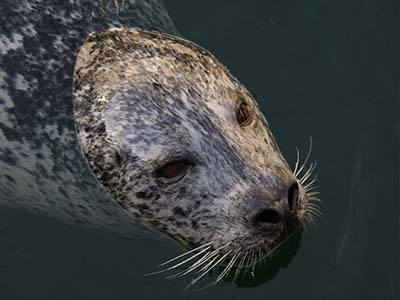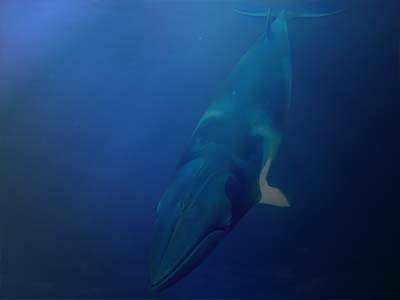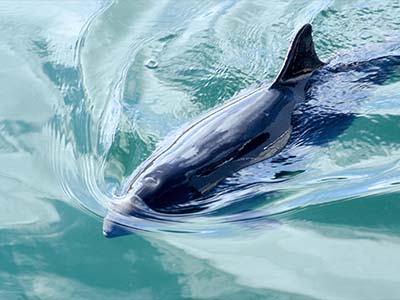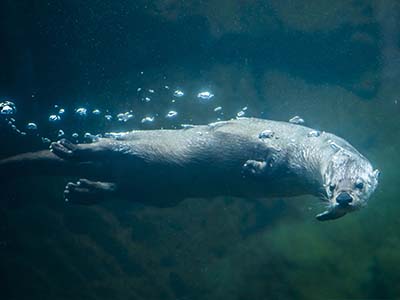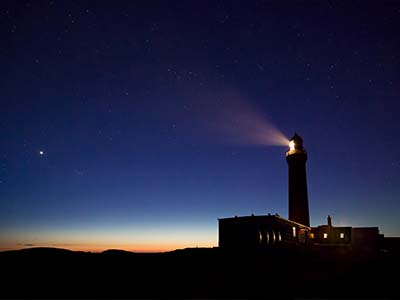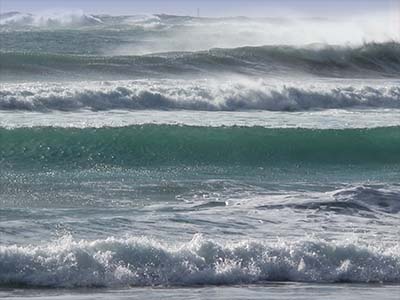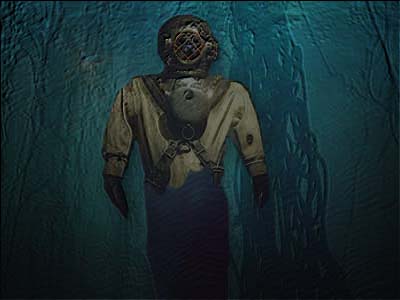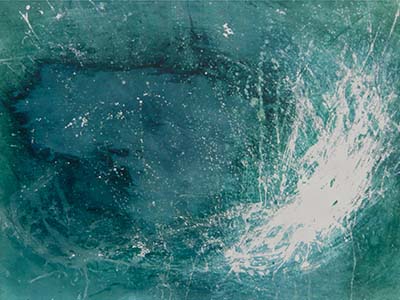When you plunged
The light of Tuscany wavered
And swung through the pool
From top to bottom.
I loved your wet head and smashing crawl,
Your fine swimmer's back and shoulders
Surfacing and surfacing again
This year and every year since.
I sat dry-throated on the warm stones.
You were beyond me.
The mellowed clarities, the grape-deep air
Thinned and disappointed.
Thank God for the slow loadening,
When I hold you now
We are close and deep
As the atmosphere on water.
My two hands are plumbed water.
You are my palpable, lithe
Otter of memory
In the pool of the moment,
Turning to swim on your back,
Each silent, thigh-shaking kick
Re-tilting the light,
Heaving the cool at your neck.
And suddenly you're out,
Back again, intent as ever,
Heavy and frisky in your freshened pelt,
Printing the stones.
Seamus Heaney
The Sea Otter
Kings of the nearshore and cousins to the lubberly weasel and marten. Though they are found in a wide variety of coastal marine habitats it is rare to meet an otter. Happiest in the sea and uniquely tooled up for guddling about on the foreshore, their environment is grateful for their busy tactile management. Their only concern is that we should cease stuffing it up for everything else.
Four foot of buoyant double-furred body and a blunt sensitive snout with teeth built for crushing not tearing. Their keen-eyed intelligent face is edged with whiskers that no doubt help in the murky kelp of their native shoreline. When underwater, with their nostrils and ears closed, they rely on agility over speed, their pulsing body power combining with their webbed hind feet and rudder-like tails. Above the water they hear as well as their badger brothers, but under the waves it seems they are particularly sensitive to high-frequency sounds.
Their compulsive grooming has more to do with keeping warm than just looking good. Prior to sorting out their own patch they spend a lot of time rafting with their pals, foraging for food, then lying back and taking it easy. All the good stuff happens at sea.
Females have a strong bond with their pups which is tough because only about 25% of them will go on to enjoy the typical life span of fifteen to twenty years. Pups are the most vocal and can be heard squealing when its mother leaves it to dive for food or when a male approaches. Sea otters can coo, whine, growl, snarl, whistle and hiss.
They are a European protected species as studies have shown that high mortality rates among prime-aged adult animals, not lower reproduction rates, are the underlying cause for the population’s stagnant growth and disturbingly low numbers.
Many of the dangers that threaten sea otters are down to human activity, be it habitat degradation, coastal pollutants or contaminant exposure. Determining precisely how these factors are impacting the overall health of the southern sea otter population and the nearshore marine ecosystem on which they and other species depend is critical to the development and implementation of effective, long-term management and mitigation strategies, and ultimately to the recovery of the species.

